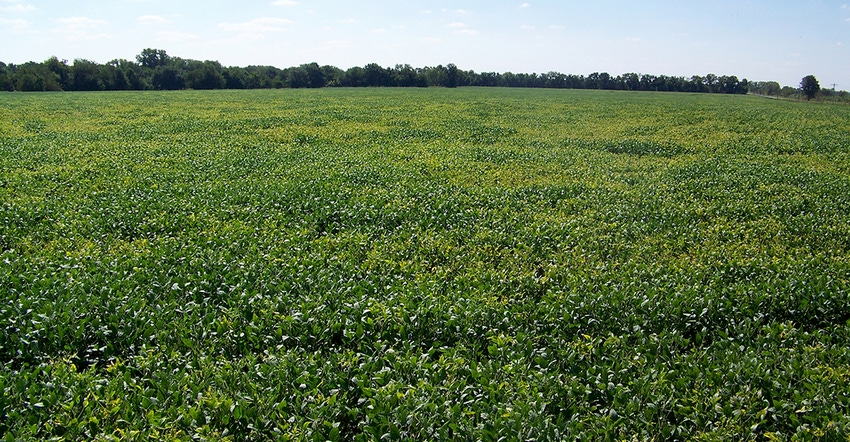
The rising cost of potash prompted farmers to cut back on applications. University of Missouri Extension agronomy specialist Pat Miller says that could be a mistake.
Potash is essential to healthy fields and pastures, but the current cost may be prohibitive. The USDA Agriculture Marketing Service’s last report of fertilizer prices in nearby Illinois was released July 29. It saw prices for potash at $600 per ton. That is an increase from $350 per ton in 2020, or a 71% price hike. The last time potash was higher than $600 per ton was in 2012.
However, Miller says that potash is one of those nutrients that is needed to have crops or fields reach their full potential. So, she says it is important that farmers pencil in potash for the next growing season.
Identify potash loss in crop fields
Potash deficiency shows as yellowing along the leaf edges, a symptom that is sometimes confused with soybean cyst nematode.
Different crops deplete soils of potash at different rates, Miller says, but all crops remove potash. Corn yielding 120 bushels per acre removes 35 pounds of potash per acre. Soybeans reaching 45 bushels per acre remove 65 pounds of potash.
If farmers apply potash only before corn in a corn-soybean rotation, they will need to apply 100 pounds of potash just to replace what was removed, Miller explains. “If the soil needed potash to be built up or yields were higher, even more would be needed,” she says.
Pastures and hayfields can also be deficient in potash. Harvesting 3 tons of fescue hay removes 100 pounds of potash, Miller says. “So, it is not surprising to find old hayfields that are nearly depleted of available potash,” she says.
Fall is a good time to apply potash, but spring applications work as well.
Test soil before replacement
With the higher cost of fertilizer inputs such as potash, farmers can mind their bottom line by applying only what nutrient is needed and the right amount.
The University of Missouri offers soil fertility analysis at its MU Soil and Plant Testing Laboratory. For a quick reference, scan the QR codes listed on the flyer below to see what is available. It also offers farmers a tutorial on how to take and submit soil tests.

Farmers can also contact their local agronomist or MU Extension agronomist for more help in the area of determining fertilizer needs for next year’s crop.
University of Missouri Extension contributed to this article.
About the Author(s)
You May Also Like






